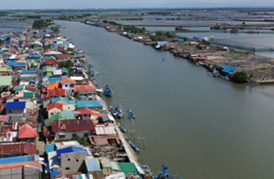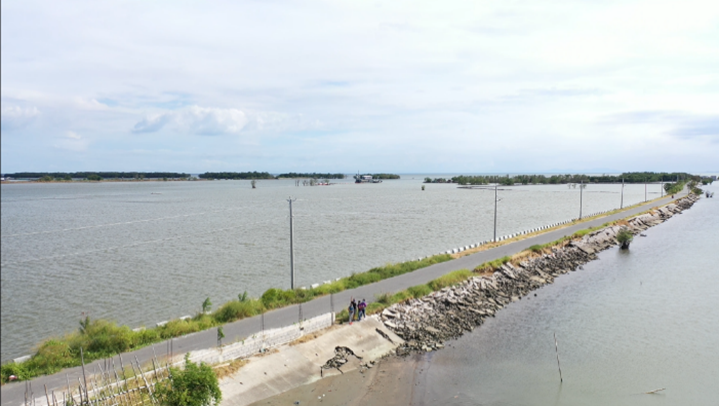Fluvial Flooding
A fluvial or river flooding occurs when the water level overflows onto the surrounding banks and neighbouring land. The water level rise is primarily caused by excessive rainfall, but the highest water levels occur when the rainfall coincides with a storm surge compound flooding. The storm surge will limit the discharge capabilities of the river, further impacting the water level rise upstream.
The progressing cultivation of the mangrove areas and conversion of tidal flats adjacent to rivers, the canalization of the rivers, and restrictions of the natural river flow in the form of narrow dikes and fishpond expansion have reduced the discharge and storage capacity of the river systems as there is less space for the water to flow. Due to the low discharge capacity, flood levels are higher, and surrounding areas become more prone to flooding. The canalization of river channels also hampers frequent sedimentation in areas adjacent to the river. This reduction in sediment supply reduces the ability of the natural delta system to increase in elevation and grow with sea-level rise. Dredging below sea level also affects flooding as it leads to backwaters when water levels are high.


Examples of river canalization in the North Manila Bay Delta (Angat River and Pampanga River)